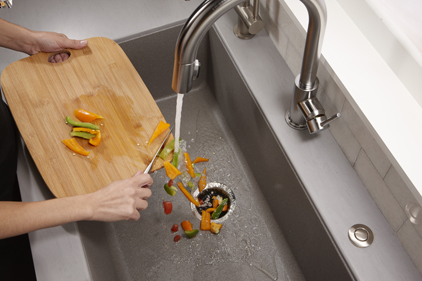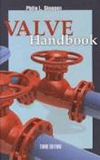By Michael Keleman
As Earth Day approaches and consumers consider ways to “green” their lifestyles, one opportunity is how they handle food waste.

|
| Photo Credit: InSinkErator |
Each year in the United States, nearly 34 million tons of food waste is trucked to landfills. According to the U.S. Environmental Protection Agency, food waste is the single largest component of municipal solid waste sent to landfills. Once there, it quickly decomposes and produces methane, an environmentally harmful greenhouse gas at least 21 times more potent than carbon dioxide.
One alternative that might be overlooked is a fairly common household appliance: the food waste disposer. Approximately 50% of all U.S. homes have an installed disposer.
Food waste disposers convert food scraps, which consist of 70% water on average, into a liquid slurry that can safely flow into the sewage system or a septic tank. Sending food waste to a wastewater treatment plant rather than sending it to a landfill also reduces the potential contamination of groundwater.
While running a food waste disposer does involve running water and electricity, the environmental impact is minimal. Disposers use only about 1% or less of a household’s total water consumption (about as much water per day as one flush of a toilet) and cost on average less than 50 cents a year in electric usage.
So, will usage of food waste disposers increase as landfill space decreases? Perhaps — with the help of influencers like those in the plumbing industry. One area of opportunity is those households on a septic system where the use of food waste disposers is below average. A common myth is that households on septic can’t use a disposer when in fact a septic system is designed to safely treat and dispose of household waste from the kitchen and bathroom(s). If the system is sized to handle a dishwasher or clothes washer in addition to sinks and toilets, it can handle a disposer as well.
Another myth that holds people back from grinding food waste is that certain items can’t go down a disposer. The truth is that most food can down a disposer; certain models can even handle more troublesome waste like bones and fibrous materials like celery. As long as consumers follow these best practices for using a disposer, they should have nothing to fear:
- Run a moderate flow of cold water;
- Turn on the disposer;
- Gradually feed food waste in while disposer and water are both running;
- Continue to run cold water for a few seconds after grinding is complete; and
- Never pour grease or fat into your disposer or drain.
With better education and outreach to consumers, additional use of food waste disposers can be a win for both plumbers and the environment.
Author bio: Michael Keleman currently serves as Manager of Environmental Engineering for InSinkErator, a business unit of Emerson, a manufacturer of food waste disposers. He can be reached at Michael.Keleman@emerson.com.
HELPFUL LINKS:
- InSinkErator
- Follow Supply House TImes on Twitter!
- Find Supply House TImes on Facebook!
- Join Supply House TImes on LinkedIn!



